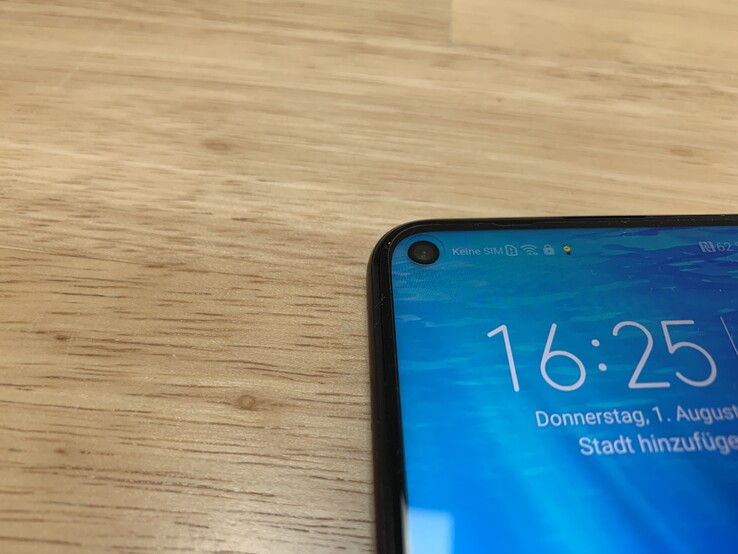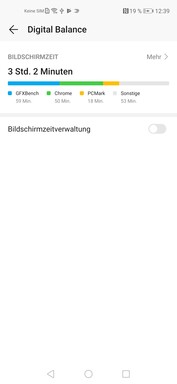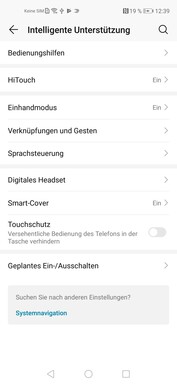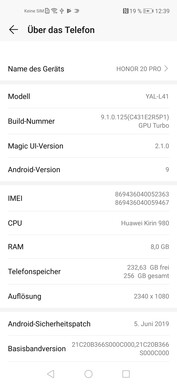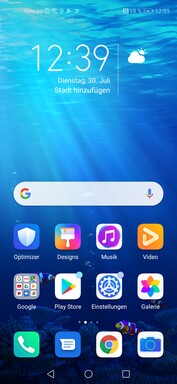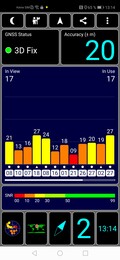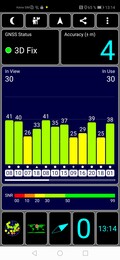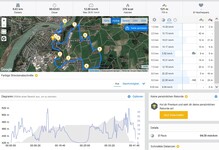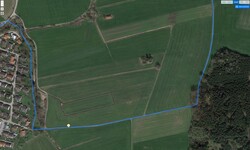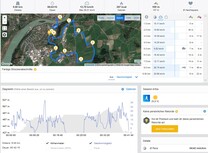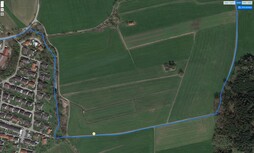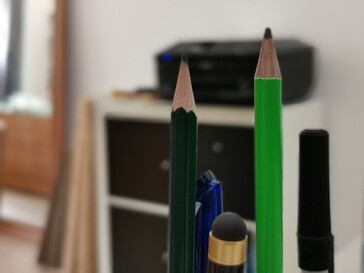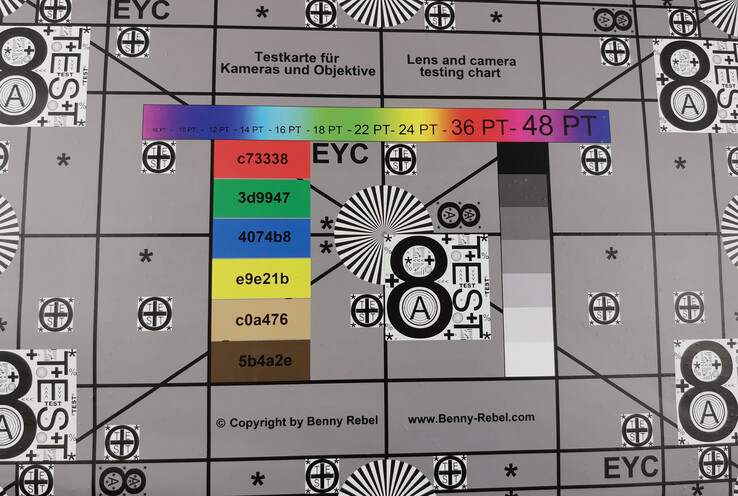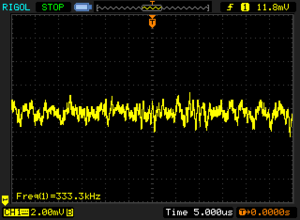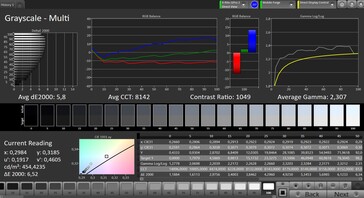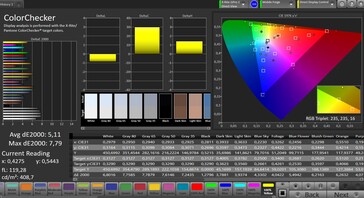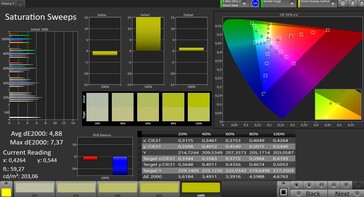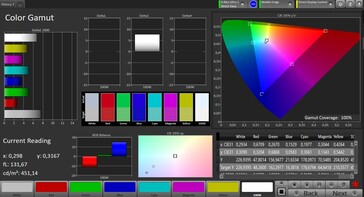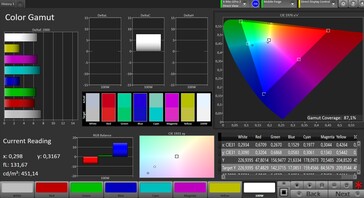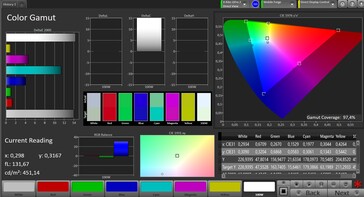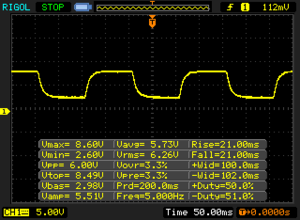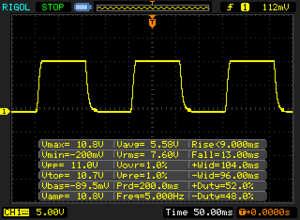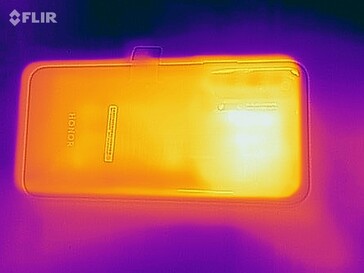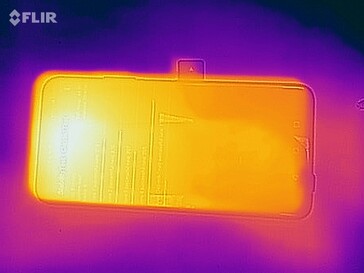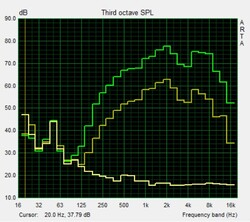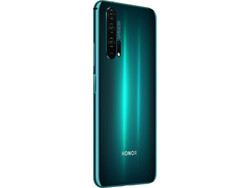Honor 20 Pro Smartphone Review – Quad-Cam and a lot of Stamina
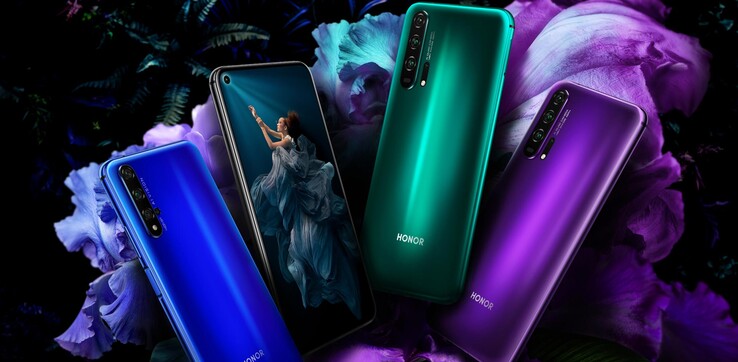
This year, Honor is trying to offer the right type of device to even more types of customers by not only offering a cheaper Lite version, but also a Pro version of the Honor 20, the latter of which we are going to take a look at in this review.
The Honor 20 Pro is equipped with a rather large battery and a slightly modified camera setup compared to the standard version of the Honor 20: Next to the main camera on the back, there is a telephoto, macro and a wide-angle lens. The Honor 20 lacks the telephoto objective and comes with a 2 MP camera that is used for depth of field effects instead. Additionally, the Honor 20 Pro is fitted with 2 GB more RAM.
The premium for the Pro model is 100 Euros (~$111), which brings the manufacturer's suggested retail price to 599 Euros (~$667) total. This price class also includes the Samsung Galaxy A80, ZTE Axon 10 Pro, OnePlus 7, and the Nokia 9. Let us take a look at how the Honor 20 Pro fares against its strong competitors.
Case – Iridescent Experience
The case is built on a metal frame, the back is made of glass. Honor calls the colors, which reflect green or violet light, Phantom Blue and Phantom Black, respectively. The effect itself looks very classy and nice, which is why it would be a shame to hide the Honor 20 Pro behind an opaque shell.
At 182 grams (~0.40 lb), the device's weight is identical to that of the OnePlus 7 and not particularly low, but unlike the Galaxy A80 it does not belong to the heavyweights in this comparison either. The measurements of our test model are very similar to the OnePlus 7's as well.
By placing the fingerprint sensor inside of the power button on the side of the device, it remains in a rather intuitive position and the back remains unblemished. Instead of a notch on the screen, the camera is located in the top left corner of the display. According to Honor, the screen takes up 91.7% of the front, our measurements put the screen-to-body ratio at just below 85%, which translates to slim but still very noticeable bezels.
Connectivity – Honor Phone with a Lot of Storage
The memory configuration is excellent - 8 GB of RAM and 256 GB of storage space are not available on other models at all, the OnePlus 7 in the same configuration costs 10 Euros more (~$11). On the other hand, you can save 50 Euros (~$56) on the OnePlus 7 by opting for 6 GB of RAM and 128 GB of storage space, an identical configuration is only available on the Honor 20 and not on the Honor 20 Pro.
While two SIM cards are supported, the storage cannot be expanded with a microSD card.
The smartphone also features NFC and USB type-C, although the latter only supports USB 2.0 speeds internally and thus does not allow for very fast data transfer rates. While there is no 3.5 mm audio jack, Honor does include a USB type-C to audio jack adapter. On the top edge, there is an indentation, which could hint at an infrared sensor, although at least on our European test model, it is not active.
There is a notification LED inside of the speaker grill in the earphone.
Software – Honor MagicUI with Bloatware
Honor uses Android 9 with MagicUI 2.1.0 as its operating system. While as of this writing, it is still identical to Huawei's EMUI 9, it is possible for Honor to make a lot of their own changes in the future. Unfortunately, there are some bloatware apps. Users who do not like them have the option to uninstall them completely however. The security patches date back to early June 2019, which means they are fairly up-to-date.
Since Honor has obtained a DRM certification, the Honor 20 Pro is suitable for HD videos from popular streaming services.
Communication and GPS – Wi-Fi Could Be Faster
The Honor 20 Pro offers fast LTE with a download rate of up to 1.4 Gbit/s and supports all of the most important LTE bands and although our version lacks several important bands for the US, it should be suitable for most countries in the world. The Honor 20 Pro's signal strength is good in urban areas and inside of buildings, a trait that it most likely has the glass chassis, which many manufacturers currently use to make the job of smartphone antennas easier, to thank for.
While Wi-Fi 5, which supports very fast connections, is available on the Honor 20 Pro, the latest standard Wi-Fi 6 (802.11 ax) is still being ignored for now. In our Wi-Fi test with the router Linksys EA8500, the Honor 20 shows itself to be rather slow and is unable to compete with the other devices in our comparison due to data transfer rates of between 250 and 290 Mbit/s. At least, the data transfer rates are relatively stable.
| Networking | |
| iperf3 transmit AX12 | |
| ZTE Axon 10 Pro | |
| Nokia 9 PureView | |
| OnePlus 7 | |
| Samsung Galaxy A80 | |
| Honor 20 Pro | |
| iperf3 receive AX12 | |
| Nokia 9 PureView | |
| ZTE Axon 10 Pro | |
| Samsung Galaxy A80 | |
| OnePlus 7 | |
| Honor 20 Pro | |
In our test with the app GPS Test, the Honor 20 Pro fares rather well: We measured an accuracy of within 20 meters (~66 ft) when next to a window and an accuracy of within 4 meters (~13 ft) outdoors. Our position was determined accurately in Google Maps as well.
In our real-world test, the Honor 20 does very well: The difference in the measured distance of our bike ride, on which we also take the professional Navi Garmin Edge 520 for comparison, is only 30 meters (~98 ft). On top of that, the representation of the traversed side of the street on the bridge is more accurate, whereas the Garmin Edge is more precise on dirt tracks. Thus, the Honor 20 Pro can be used for navigation tasks that require a high degree of precision, as well. Our test device supports dual-GPS, which refers to accessing two frequencies for more accurate locating capabilities. Additionally, other satellite networks such as Galileo and GLONASS are supported.
Telephony and Call Quality – Solid Calls
The telephony software will look familiar to Huawei and Honor users, since there are no differences compared to the other smartphones of the manufacturer yet. Those who have been using a stock Android device will notice the focus on the dial pad, above which there is a list of recent calls; contacts and favorites can be accessed through tabs.
VoLTE and VoWi-Fi are supported, although we were only offered Wi-Fi calling during our test.
The earpiece is installed above the display, which means that there are no gimmicks such as on the Galaxy A80, which supports sound output through the screen. While the call quality is solid, it is accompanied by slight distortions that make our conversational partner sound less present. Regardless of whether we talk loudly or quietly, our voice is captured well.
On the speaker and with hands-free communication, our conversational partner does not sound very present either, although the sound is overall decent here as well. While users will have to pay attention not to speak too quietly, ambient noise is filtered out fairly well in return.
Cameras – Very Flexible Quad-Cam
Honor has poured a lot of effort into the 20 Pro's camera: It is supposed to be flexible and aims to offer a high image quality. In order to achieve this, there are four different optics with different focal lengths and Sony's IMX 586 as the image sensor. While it is used in many of the latest smartphones in this price range and sports a very high resolution, we observed in our recently published comparison of multiple smartphones with this specific sensor that the image quality also heavily depends on the software. Thus, it is still all up in the air for the Honor 20 Pro.
Let us first take a look at the different optics, which are supposed to generate a high degree of flexibility through their different characteristics. The wide-angle lens visibly distorts towards the edges and exhibits a lack of sharpness in these areas as well. While the pictures do not appear to represent details particularly sharply, either, exposure is well-balanced. The main optics offers a significantly increased degree of sharpness and captures details precisely. However, sharpness significantly decreases towards the edges here, as well. The image from the telephoto lens is almost too bright and does not offer very precise details, also the edges tend to fray a lot. The macro lens shows somewhat unclean edges as well. The main camera and the telephoto lens use an optical image stabilizer.
The main camera has a resolution of 48 megapixels and while it is possible to take pictures at this resolution, the camera defaults to 12 megapixel pictures, combining four pixels into one in order to capture more light. In terms of object photography, the smartphone does very well and we particularly like the image sharpness and the high degree of detail, although the colors appear even clearer still on the iPhone XS Max. We also like the exposure and the low amount of image noise in the landscape picture as well as the very detailed sky on the Honor 20 Pro. While it once again falls behind the iPhone when it comes to low-light pictures since the latter captures even more details, the Honor 20 Pro is more than adequate in this category as well.
There is also a special dedicated night mode, which takes a series of pictures and combines them afterwards. It works very well and increases the level of detail and the brightness level significantly. While we are satisfied with the artificial Bokeh effect in portrait mode, the tip of the right pencil shows that the calculations are not always perfect.
The front camera, which is integrated directly into a hole in the display, takes decent selfies, although the brightness level could be better.
At 4K, video can only be recorded with 30 FPS, 60 FPS is reserved for Full HD and below. However, various filters can be enabled, which for example turn our video into a monochrome film. We like the high degree of sharpness and the speed at which the sensor adjusts to changes in ambient brightness.
We performed additional tests with the main camera in our lab under controlled lighting conditions. The test chart reveals that text in front of a red background is displayed slightly inaccurately. There are also small issues with sharpness towards the edges. The color representation is slightly too dark overall.
Accessories and Warranty – Honor 20 Pro with Included Headset
Honor includes the following accessories: Aside from the quick charger and the USB cable, there is a SIM tool for opening the SIM tray. Furthermore, there is a headset and a USB type-C to 3.5mm audio jack adapter. The display on the front of the device is fitted with a screen protector that is hard to remove. As of this article, Honor does not offer accessories specifically tailored to the Honor 20 Pro on their online shop.
The smartphone comes with a 24-month Warranty. The HiCare app provides first aid for any issues, shows the closest service centers and even offers a maintenance mode, which can be activated before sending the 20 Pro in for repairs to protect unauthorized access to personal data.
Input & Handling – Swift Fingerprint Sensor
The applied screen protector on the display does not negatively impact navigating the menus and the touchscreen is very precise and reliable all the way towards the edges. Thanks to the fast SoC, navigating the menus is a smooth experience.
The fingerprint sensor is located on the right edge of the case within the power button and using it is a real joy: It was so reliable and extremely fast, we sometimes felt as though we had not even yet touched the button and the smartphone had already been unlocked. At the same time, the sensor is very secure and does not unlock the phone when it does not detect the right fingerprint.
Alternatively, face unlock, which reliably recognizes our face and optionally works together with the fingerprint sensor to verify our identity, can be activated. This unlocking method works rather well, too, and in low-light situations, the screen simply lights up and illuminates our face.
Display – Honor 20 Pro with IPS-Display
The IPS display makes the Honor 20 Pro an outcast among high-end smartphones: Here, OLED displays are much more common. A good IPS display does not have to be a drawback however.
That said, a quick glance at our measurements reveals that the Honor 20 Pro cannot quite keep up with the other devices in terms of brightness: While at 514 nits, maximum brightness is far from low, many of the latest AMOLED devices can already reach more than 600 nits with the help of the light sensor.
Furthermore, the black value and contrast ratio of the IPS display are not quite as close to perfect as those of the OLED diodes, which can be switched off entirely. Subjectively however, the screen of the Honor 20 Pro looks very high-quality and shines with a good color representation and a high contrast ratio.
| |||||||||||||||||||||||||
Brightness Distribution: 92 %
Center on Battery: 514 cd/m²
Contrast: 1028:1 (Black: 0.5 cd/m²)
ΔE ColorChecker Calman: 5.1 | ∀{0.5-29.43 Ø4.77}
ΔE Greyscale Calman: 5.8 | ∀{0.09-98 Ø5}
100% sRGB (Calman 2D)
Gamma: 2.3
CCT: 8142 K
| Honor 20 Pro IPS, 2340x1080, 6.3" | OnePlus 7 AMOLED, 2340x1080, 6.4" | Nokia 9 PureView P-OLED, 2880x1440, 6" | ZTE Axon 10 Pro AMOLED, 2340x1080, 6.5" | Samsung Galaxy A80 AMOLED, 2400x1080, 6.7" | |
|---|---|---|---|---|---|
| Screen | 21% | 34% | 5% | 11% | |
| Brightness middle (cd/m²) | 514 | 603 17% | 648 26% | 402 -22% | 478 -7% |
| Brightness (cd/m²) | 495 | 605 22% | 641 29% | 399 -19% | 486 -2% |
| Brightness Distribution (%) | 92 | 94 2% | 92 0% | 92 0% | 96 4% |
| Black Level * (cd/m²) | 0.5 | ||||
| Contrast (:1) | 1028 | ||||
| Colorchecker dE 2000 * | 5.1 | 3.5 31% | 2.3 55% | 4.1 20% | 2.97 42% |
| Colorchecker dE 2000 max. * | 7.8 | 7.7 1% | 5.2 33% | 6.5 17% | 10.18 -31% |
| Greyscale dE 2000 * | 5.8 | 2.7 53% | 2.2 62% | 3.7 36% | 2.5 57% |
| Gamma | 2.3 96% | 2.266 97% | 2.3 96% | 2.23 99% | 2.031 108% |
| CCT | 8142 80% | 6775 96% | 6592 99% | 7841 83% | 6533 99% |
* ... smaller is better
Screen Flickering / PWM (Pulse-Width Modulation)
| Screen flickering / PWM detected | 333 Hz | ≤ 15 % brightness setting | |
The display backlight flickers at 333 Hz (worst case, e.g., utilizing PWM) Flickering detected at a brightness setting of 15 % and below. There should be no flickering or PWM above this brightness setting. The frequency of 333 Hz is relatively high, so most users sensitive to PWM should not notice any flickering. However, there are reports that some users are still sensitive to PWM at 500 Hz and above, so be aware. In comparison: 53 % of all tested devices do not use PWM to dim the display. If PWM was detected, an average of 8084 (minimum: 5 - maximum: 343500) Hz was measured. | |||
Under a spectrophotometer, the results of our tests reveal a noticeable blue tint. Color deviations are rather small otherwise, although OLED displays are even more precise.
When it comes to color space coverage, sRGB is covered fully, the cinema color space DCI-P3 coverage is above 97%. This allows users to accurately judge the colors on the display, provided it has been set up correctly, which can be useful if you want to print out the pictures or process them professionally.
We detected screen flickering with a frequency of 333 Hz at brightness levels below 15%, which can most likely be attributed to the use of PWM for reducing the display's brightness. The relatively high response times of the screen are more irritating however, and make the smartphone less attractive for gamers.
Display Response Times
| ↔ Response Time Black to White | ||
|---|---|---|
| 42 ms ... rise ↗ and fall ↘ combined | ↗ 21 ms rise | |
| ↘ 21 ms fall | ||
| The screen shows slow response rates in our tests and will be unsatisfactory for gamers. In comparison, all tested devices range from 0.1 (minimum) to 240 (maximum) ms. » 98 % of all devices are better. This means that the measured response time is worse than the average of all tested devices (20.2 ms). | ||
| ↔ Response Time 50% Grey to 80% Grey | ||
| 24 ms ... rise ↗ and fall ↘ combined | ↗ 9 ms rise | |
| ↘ 13 ms fall | ||
| The screen shows good response rates in our tests, but may be too slow for competitive gamers. In comparison, all tested devices range from 0.165 (minimum) to 636 (maximum) ms. » 33 % of all devices are better. This means that the measured response time is better than the average of all tested devices (31.6 ms). | ||
The viewing angles are great, there are only minor changes in brightness when viewing the display from shallow, lateral angles. While the Honor 20 Pro also does well outdoors and screen contents remain recognizable even in very bright environments, reflections obstruct the view more and more in direct sunlight, which is why users should try to stay within the shade.
Performance – Not Quite as Fast as a Snapdragon
Since Huawei manufactures their own SoCs, its subsidiary Honor relies on the in-house chips as well and equips the Honor 20 Pro with a HiSilicon Kirin 980. This octa-core SoC offers 2 very fast, 2 fast and 4 energy efficient, slower cores. While it cannot quite compete with the top player of the high-end segment, the Qualcomm Snapdragon 855, it is still a very fast processor that enables swift menu navigation during daily use and running almost all apps smoothly.
The ARM Mali-G76 MP10 , which is currently one of the fastest smartphone graphics solutions and supports all of the popular interfaces for mobile graphics, serves as the graphics unit. It also comes with an AI unit, which is supposed to improve the efficiency.
| PCMark for Android | |
| Work performance score (sort by value) | |
| Honor 20 Pro | |
| OnePlus 7 | |
| Nokia 9 PureView | |
| ZTE Axon 10 Pro | |
| Samsung Galaxy A80 | |
| Average HiSilicon Kirin 980 (9728 - 13531, n=10) | |
| Work 2.0 performance score (sort by value) | |
| Honor 20 Pro | |
| OnePlus 7 | |
| Nokia 9 PureView | |
| ZTE Axon 10 Pro | |
| Samsung Galaxy A80 | |
| Average HiSilicon Kirin 980 (7567 - 9326, n=10) | |
| GFXBench 3.0 | |
| on screen Manhattan Onscreen OGL (sort by value) | |
| Honor 20 Pro | |
| OnePlus 7 | |
| Nokia 9 PureView | |
| ZTE Axon 10 Pro | |
| Samsung Galaxy A80 | |
| Average HiSilicon Kirin 980 (37 - 60, n=10) | |
| Average of class Smartphone (18 - 166, n=155, last 2 years) | |
| 1920x1080 1080p Manhattan Offscreen (sort by value) | |
| Honor 20 Pro | |
| OnePlus 7 | |
| Nokia 9 PureView | |
| ZTE Axon 10 Pro | |
| Samsung Galaxy A80 | |
| Average HiSilicon Kirin 980 (40 - 91, n=10) | |
| Average of class Smartphone (12 - 606, n=154, last 2 years) | |
| GFXBench 3.1 | |
| on screen Manhattan ES 3.1 Onscreen (sort by value) | |
| Honor 20 Pro | |
| OnePlus 7 | |
| Nokia 9 PureView | |
| ZTE Axon 10 Pro | |
| Samsung Galaxy A80 | |
| Average HiSilicon Kirin 980 (24 - 54, n=10) | |
| Average of class Smartphone (11 - 166, n=155, last 2 years) | |
| 1920x1080 Manhattan ES 3.1 Offscreen (sort by value) | |
| Honor 20 Pro | |
| OnePlus 7 | |
| Nokia 9 PureView | |
| ZTE Axon 10 Pro | |
| Samsung Galaxy A80 | |
| Average HiSilicon Kirin 980 (25 - 56, n=10) | |
| Average of class Smartphone (8.4 - 413, n=154, last 2 years) | |
| AnTuTu v7 - Total Score (sort by value) | |
| Honor 20 Pro | |
| OnePlus 7 | |
| Nokia 9 PureView | |
| ZTE Axon 10 Pro | |
| Samsung Galaxy A80 | |
| Average HiSilicon Kirin 980 (268359 - 322616, n=10) | |
In terms of browser performance, the Honor 20 Pro is in the middle range of our comparison. This still translates to fast browsing speeds and short loading times for web pages during daily use. Those who want the fastest browsing experience possible should take a look at the OnePlus 7, which comes in first among the devices in our comparison.
| Jetstream 2 - 2.0 Total Score | |
| Average of class Smartphone (23.8 - 387, n=147, last 2 years) | |
| OnePlus 7 (Chrome 74) | |
| Average HiSilicon Kirin 980 (48.4 - 60.9, n=6) | |
| ZTE Axon 10 Pro (Chrome 74) | |
| Honor 20 Pro (Chrome 75) | |
| Nokia 9 PureView (Chrome 73.0.3683.90) | |
| Samsung Galaxy A80 (Chrome 75) | |
| Speedometer 2.0 - Result 2.0 | |
| Average of class Smartphone (15.2 - 643, n=119, last 2 years) | |
| OnePlus 7 (Chome 74) | |
| ZTE Axon 10 Pro (Chrome 74) | |
| Average HiSilicon Kirin 980 (58.3 - 67.8, n=6) | |
| Honor 20 Pro (Chome 75) | |
| Nokia 9 PureView (Chrome 73.0.3683.90) | |
| Samsung Galaxy A80 (Chome 75) | |
| WebXPRT 3 - Overall | |
| Average of class Smartphone (38 - 380, n=30, last 2 years) | |
| OnePlus 7 (Chrome 74) | |
| Average HiSilicon Kirin 980 (86 - 124, n=10) | |
| Honor 20 Pro (Chrome 75) | |
| ZTE Axon 10 Pro (Chrome 74) | |
| Nokia 9 PureView (Chrome 73.0.3683.90) | |
| Samsung Galaxy A80 (Chrome 75) | |
| Octane V2 - Total Score | |
| Average of class Smartphone (2228 - 126661, n=194, last 2 years) | |
| ZTE Axon 10 Pro (Chrome 74) | |
| OnePlus 7 (Chrome 74) | |
| Average HiSilicon Kirin 980 (20618 - 23285, n=10) | |
| Honor 20 Pro (Chrome 75) | |
| Nokia 9 PureView (Chrome 73.0.3683.90) | |
| Samsung Galaxy A80 (Chrome 75) | |
| Mozilla Kraken 1.1 - Total | |
| Samsung Galaxy A80 (Chrome 75) | |
| Honor 20 Pro (Chrome 75) | |
| Nokia 9 PureView (Chrome 73.0.3683.90) | |
| Average HiSilicon Kirin 980 (1948 - 3098, n=10) | |
| OnePlus 7 (Chrome 74) | |
| ZTE Axon 10 Pro (Chrome 74) | |
| Average of class Smartphone (257 - 28190, n=154, last 2 years) | |
* ... smaller is better
While the UFS 2.1 flash storage inside of our Honor test model is a very modern storage medium, OnePlus has already set new standards with their latest phones and UFS 3.0 storage. Due to this, the Honor 20 is equipped with rather fast storage, but unable to match the OnePlus 7, particularly in terms of sequential reading and writing. On the other hand, it is significantly faster when it comes to random reading operations.
Access times are quick overall on the Honor 20 Pro, which benefits the loading times of apps and makes the system more responsive overall.
| Honor 20 Pro | OnePlus 7 | Nokia 9 PureView | ZTE Axon 10 Pro | Samsung Galaxy A80 | Average 256 GB UFS 2.1 Flash | Average of class Smartphone | |
|---|---|---|---|---|---|---|---|
| AndroBench 3-5 | 13% | -36% | 25% | -46% | 9% | 252% | |
| Sequential Read 256KB (MB/s) | 843 | 1463 74% | 728 -14% | 769 -9% | 502 -40% | 829 ? -2% | 2235 ? 165% |
| Sequential Write 256KB (MB/s) | 247.3 | 392 59% | 200.3 -19% | 503 103% | 190.4 -23% | 376 ? 52% | 1871 ? 657% |
| Random Read 4KB (MB/s) | 173.6 | 175.3 1% | 132 -24% | 150.4 -13% | 117.5 -32% | 168.8 ? -3% | 297 ? 71% |
| Random Write 4KB (MB/s) | 160.4 | 28.7 -82% | 20.18 -87% | 189.5 18% | 21.6 -87% | 143.6 ? -10% | 343 ? 114% |
| Sequential Read 256KB SDCard (MB/s) | 88.2 ? | 66.8 ? | |||||
| Sequential Write 256KB SDCard (MB/s) | 66.8 ? | 56.3 ? |
Gaming – 60 Hz on the Honor 20 Pro?
The Honor 20 Pro is able to run games at 60 Hz and the appropriate frame rate is maintained consistently in "Arena of Valor". In "Asphalt 9", it maintains a steady 30 FPS, which hints at very high gaming performance as well.
The Controls via touchscreen and gyroscope work very well, we were able to confirm this again with the endless runner "Temple Run 2".
The Magic UI 2.1 also includes GPU Turbo 3.0, which aims to improve battery life in certain games, without negatively impacting the frame rate. This is a nice feature for gamers who travel a lot, although it is not exclusive to the Honor 20 Pro but also available on cheaper models such as the Honor 20 Lite.
Emissions – High Temperatures are Possible
Temperature
The Honor 20 Pro gets very warm under continuous load, we were able to measure up to 43.7 °C (110.66 °F) on the upper half of the front. This is a very noticeable increase in temperature that can feel uncomfortable, depending on the circumstances. Those who only run games and demanding applications occasionally will experience substantially more modest temperatures.
Due to an odd bug, we are unable to provide GFXBench results here: After completing the battery test, we are not presented with the results and instead get sent back to the benchmark selection screen. The high temperatures of the exterior, which no other device with the same SoC has exhibited thus far, may force the processor to throttle when under continuous load. GFXBench's less demanding T-Rex battery test runs without any issues however and during it, the SoC is not throttled.
(±) The maximum temperature on the upper side is 43.7 °C / 111 F, compared to the average of 35.2 °C / 95 F, ranging from 21.9 to 247 °C for the class Smartphone.
(±) The bottom heats up to a maximum of 43.2 °C / 110 F, compared to the average of 34 °C / 93 F
(±) In idle usage, the average temperature for the upper side is 33.7 °C / 93 F, compared to the device average of 32.9 °C / 91 F.
Speaker
A mono speaker for a phone of the Honor 20 Pro's caliber (and price) is not in line with current trends and something OnePlus has done away with with its latest device family. This just makes the 20 Pro's single speaker on the bottom edge all the more irritating for Honor fans.
At least, it is relatively loud and the sound reproduction is relatively linear according to the chart, both of which are a good thing. The lower mids are less present than on the OnePlus 7, although the upper mids on the Honor 20 Pro appear more balanced.
There is no longer an analogue audio output on the Honor 20 Pro, but there is an adapter for the USB type-C port. Those who wish to use a headset can either opt for the wired variant or use Bluetooth, the latter of which supports Bluetooth 5.0 with aptX HD. The Honor 20 Pro also supports virtual 9.1 sound via headphones.
Honor 20 Pro audio analysis
(+) | speakers can play relatively loud (84.9 dB)
Bass 100 - 315 Hz
(-) | nearly no bass - on average 73% lower than median
(+) | bass is linear (0% delta to prev. frequency)
Mids 400 - 2000 Hz
(-) | nearly no mids - on average 73% lower than median
(+) | mids are linear (0% delta to prev. frequency)
Highs 2 - 16 kHz
(-) | nearly no highs - on average 73% lower than median
(+) | highs are linear (0% delta to prev. frequency)
Overall 100 - 16.000 Hz
(-) | overall sound is not linear (120.5% difference to median)
Compared to same class
» 89% of all tested devices in this class were better, 9% similar, 2% worse
» The best had a delta of 11%, average was 35%, worst was 134%
Compared to all devices tested
» 97% of all tested devices were better, 3% similar, 1% worse
» The best had a delta of 4%, average was 24%, worst was 134%
OnePlus 7 audio analysis
(+) | speakers can play relatively loud (85.6 dB)
Bass 100 - 315 Hz
(-) | nearly no bass - on average 70.9% lower than median
(+) | bass is linear (0% delta to prev. frequency)
Mids 400 - 2000 Hz
(-) | nearly no mids - on average 70.9% lower than median
(+) | mids are linear (0% delta to prev. frequency)
Highs 2 - 16 kHz
(-) | nearly no highs - on average 70.9% lower than median
(+) | highs are linear (0% delta to prev. frequency)
Overall 100 - 16.000 Hz
(-) | overall sound is not linear (118.1% difference to median)
Compared to same class
» 87% of all tested devices in this class were better, 8% similar, 5% worse
» The best had a delta of 11%, average was 35%, worst was 134%
Compared to all devices tested
» 96% of all tested devices were better, 2% similar, 1% worse
» The best had a delta of 4%, average was 24%, worst was 134%
Battery Life – Honor 20 Pro with Long Runtimes
Energy Consumption
There are noticeably more economic smartphones than the Honor 20 Pro, even within the same price class. Under maximum load, our test devices was relatively economical compared to its competitors, although the OnePlus 7's consumption was slightly lower in all of the other categories.
| Off / Standby | |
| Idle | |
| Load |
|
Key:
min: | |
| Honor 20 Pro 4000 mAh | OnePlus 7 3700 mAh | Nokia 9 PureView 3320 mAh | ZTE Axon 10 Pro 4000 mAh | Samsung Galaxy A80 3700 mAh | Average HiSilicon Kirin 980 | Average of class Smartphone | |
|---|---|---|---|---|---|---|---|
| Power Consumption | 16% | -27% | 20% | 18% | -7% | -13% | |
| Idle Minimum * (Watt) | 0.9 | 0.6 33% | 1.65 -83% | 0.76 16% | 0.6 33% | 0.802 ? 11% | 0.847 ? 6% |
| Idle Average * (Watt) | 1.4 | 1.1 21% | 2.34 -67% | 1.15 18% | 1.2 14% | 2.07 ? -48% | 1.448 ? -3% |
| Idle Maximum * (Watt) | 2.6 | 2 23% | 2.43 7% | 1.18 55% | 1.4 46% | 2.38 ? 8% | 1.633 ? 37% |
| Load Average * (Watt) | 5 | 4 20% | 5.02 -0% | 3.95 21% | 5 -0% | 4.87 ? 3% | 6.96 ? -39% |
| Load Maximum * (Watt) | 6.9 | 8 -16% | 6.51 6% | 7.49 -9% | 7.1 -3% | 7.46 ? -8% | 11.3 ? -64% |
* ... smaller is better
Battery Life
At 4,000 mAh, the Honor 20 Pro's battery capacity is fairly generous, the other devices in our comparison tend to have smaller batteries. This is very noticeable when it comes to runtimes as well, since devices such as the Nokia 9 PureView with its battery capacity of only 3,320 mAh cannot compete with the P20 Pro.
As for the actual numbers: Our test device lasts for 13:16 hours in our Wi-Fi test and for 4:47 hours under full load. While these results are very good, the OnePlus 7 tops them despite its slightly smaller battery, particularly in the Wi-Fi test. Overall, both smartphones play at around the same, high level, even though the OnePlus device has the edge by a small margin.
The new quick charging technology Honor SuperCharge with 22.5 watts of power has proven itself during our test: Charging the battery, which does have a rather large capacity, only takes less than an hour. Those who can only charge their smartphone for a short time still get close to 20% charge after just 10 minutes.
| Honor 20 Pro 4000 mAh | OnePlus 7 3700 mAh | Nokia 9 PureView 3320 mAh | ZTE Axon 10 Pro 4000 mAh | Samsung Galaxy A80 3700 mAh | |
|---|---|---|---|---|---|
| Battery runtime | 3% | -32% | -7% | -14% | |
| Reader / Idle (h) | 33.8 | 33.2 -2% | 20.8 -38% | 32.1 -5% | 29.9 -12% |
| H.264 (h) | 15.2 | 15.6 3% | 12.2 -20% | 17.8 17% | 15 -1% |
| WiFi v1.3 (h) | 13.3 | 15 13% | 8.1 -39% | 11.3 -15% | 11.9 -11% |
| Load (h) | 4.8 | 4.6 -4% | 3.4 -29% | 3.6 -25% | 3.3 -31% |
Pros
Cons
Verdict – Unique with a Lot of Highlights
Honor has taken bold steps with the 20 Pro: An IPS display in a high-end smartphone? That is a rare choice nowadays. The display is of high quality regardless and displays colors rather accurately with the right settings. Since stereo speakers can be found on many current smartphones, the mono speaker, much like the comparatively slow response times of the screen, represents a much bigger blunder.
At the same time however, Honor's latest flagship shines with a few real highlights: Both the incredibly fast fingerprint sensor inside of the power button and the new quick charging technology, which allows for very fast charging regardless of the smartphone's large battery, are worth mentioning. Apropos battery: Although the battery lasts for a long time, users do not have to relinquish performance, devices with a Snapdragon 855 are a smidgen faster however.
A monster in terms of storage space and battery capacity: The Honor 20 Pro offers a lot relative to its price and only comes with minor drawbacks.
Additionally, the large storage configuration gives the Honor 20 Pro an edge in terms of price/performance and makes the lack of microSD support slightly less painful. Another strength of the phone is its very precise GPS.
Although the most heavily advertised feature, the camera, is very flexible thanks to its four different optics, it cannot quite compete with the very top end of high-end cameras in terms of image quality. This is due to the minor sharpness issues towards the edges, the 30-FPS limit for 4K video and the good but not great Bokeh effect. We were impressed by the great amount of detail however.
If the minor drawbacks do not bother you too much, the Honor 20 Pro is most definitely a good choice.
Honor 20 Pro
- 09/27/2019 v7 (old)
Florian Schmitt




